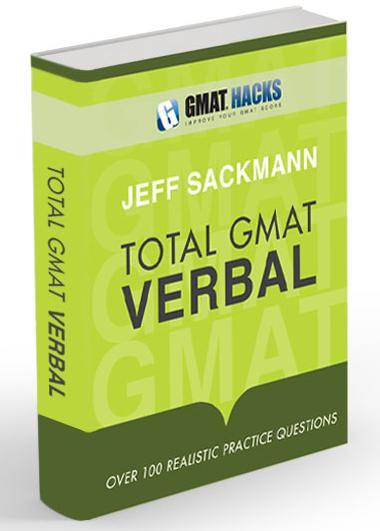
Bookshelf
|
|
Total GMAT Math Jeff's complete Quant guide, on sale now! |
|
|
Total GMAT Verbal Everything you need to ace GMAT Verbal! |
1,800 Practice Math Questions
Buy Jeff's books at Amazon.com

GMAT Official Guide, with IR
OG Math | OG Verbal
OG12 & Quant Rev solutions!
GMAT Question of the Day
Beginner's Guide to the GMAT
GMAT Hacks Affiliate Program

Recent Hacks

Categories
- General Study Tips
- Goals and Planning
- CAT Strategy
- The Mental Game
- GMAT Math Strategy
- GMAT Math Topics
- Mental Math
- Data Sufficiency
- Critical Reasoning
- Reading Comprehension
- Sentence Correction
- Analytical Writing Assessment
- Integrated Reasoning
- IR Explained
- Business School Admissions
- GMAT Prep Resources
- Practice Questions
- Total GMAT Math
- Total GMAT Verbal
- GMAT 111

IR Explained: Q32: Daily Shoppers
August 22, 2012
| You should follow me on Twitter. While you're at it, take a moment to subscribe to GMAT Hacks via RSS or Email. |
This post is part of a series--IR Explained--that walks through the sample Integrated Reasoning questions provided in the latest edition of the GMAT Official Guide.
This Graphics Interpretation question has a particularly thorny setup. For each of three days, we're given the breakdown of a retailer's customers based on their behavior. But for each day, we are only discussing those customers who came to the retailer on day 1.
In other words, the Day 2 shoppers represented on the graph are only those shoppers who came to the retailer on Day 2 after doing so on Day 1, as well.
Looking at the three types of behaviors represented in each bar, the logic becomes clearer. On Day 1, 60% of shoppers purchased a different item and did not return that week. 25% didn't purchase anything and returned the next day. The remaining 15% didn't purchase anything and did not return.
Thus, 25% of Day 1 shoppers returned the next day; the other 75% did not return either Day 2 or Day 3 (or Day 4, for that matter).
The graph, then, is misleading. While it shows Day 1, Day 2, and Day 3 as bars of equal height, the number of shoppers represented on day 2 is only a quarter the number of those on day 1.
Question 32A zeroes in on this source of complexity. What percentage of Day 1 shoppers returned on Day 3? We know that 25% of Day 1 shoppers returned on Day 2, and 75% of Day 1 shoppers did not return all week. Thus, any Day 1 shopper who returned on Day 3 must have also returned on Day 2.
The bar for Day 2 shows us that 19% of shoppers on Day 2 returned the next day. (The other 81%, whether they made a purchase or not, did not return.) Thus, if 25% of Day 1 shoppers returned on Day 2, and 19% of Day 2 shoppers returned on Day 3, then percentage of Day 1 shoppers who returned on Day 3 is (25%)(19%) = (.25)(.19), or about 5%. That's Between 1 and 10.
In 32B, you are asked to compare the amount that Day 1 shoppers paid for alternate items to the amount that Day 1 shoppers would have paid for the original, out-of-stock item had they all purchased it.
Say that there were 100 Day 1 shoppers and the original item cost $10. If all the shoppers had been able to purchase it, they would have spent $1000.
Instead, only 60% (60) Day 1 shoppers purchased an alternate item. We're told from the introductory paragraph that the substitute item cost, on average, 30% more. That's $13 instead of $10.
Thus, 60 shoppers paid $13 each, for a total of $780. Compared to $1000, $780 is 78%, our answer.
Stay tuned (or subscribe) for more Integrated Reasoning explanations
About the author: Jeff Sackmann has written many GMAT preparation books, including the popular Total GMAT Math, Total GMAT Verbal, and GMAT 111. He has also created explanations for problems in The Official Guide, as well as 1,800 practice GMAT math questions.
 |
Total GMAT Verbal
The comprehensive guide to the GMAT Verbal section. Recognize, dissect, and master every question type
you'll face on the test. Everything you need, all in one place, including 100+ realistic practice questions. |